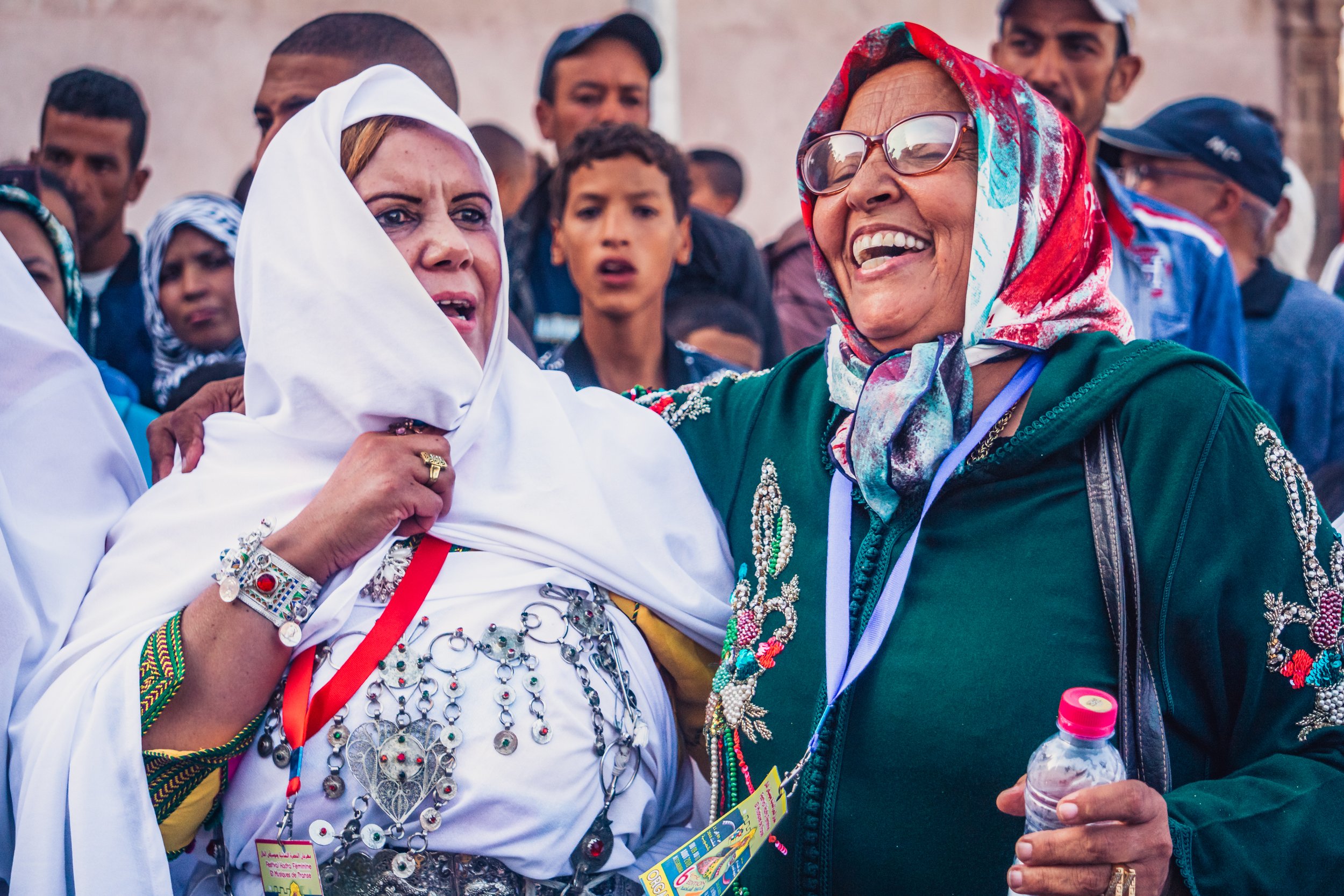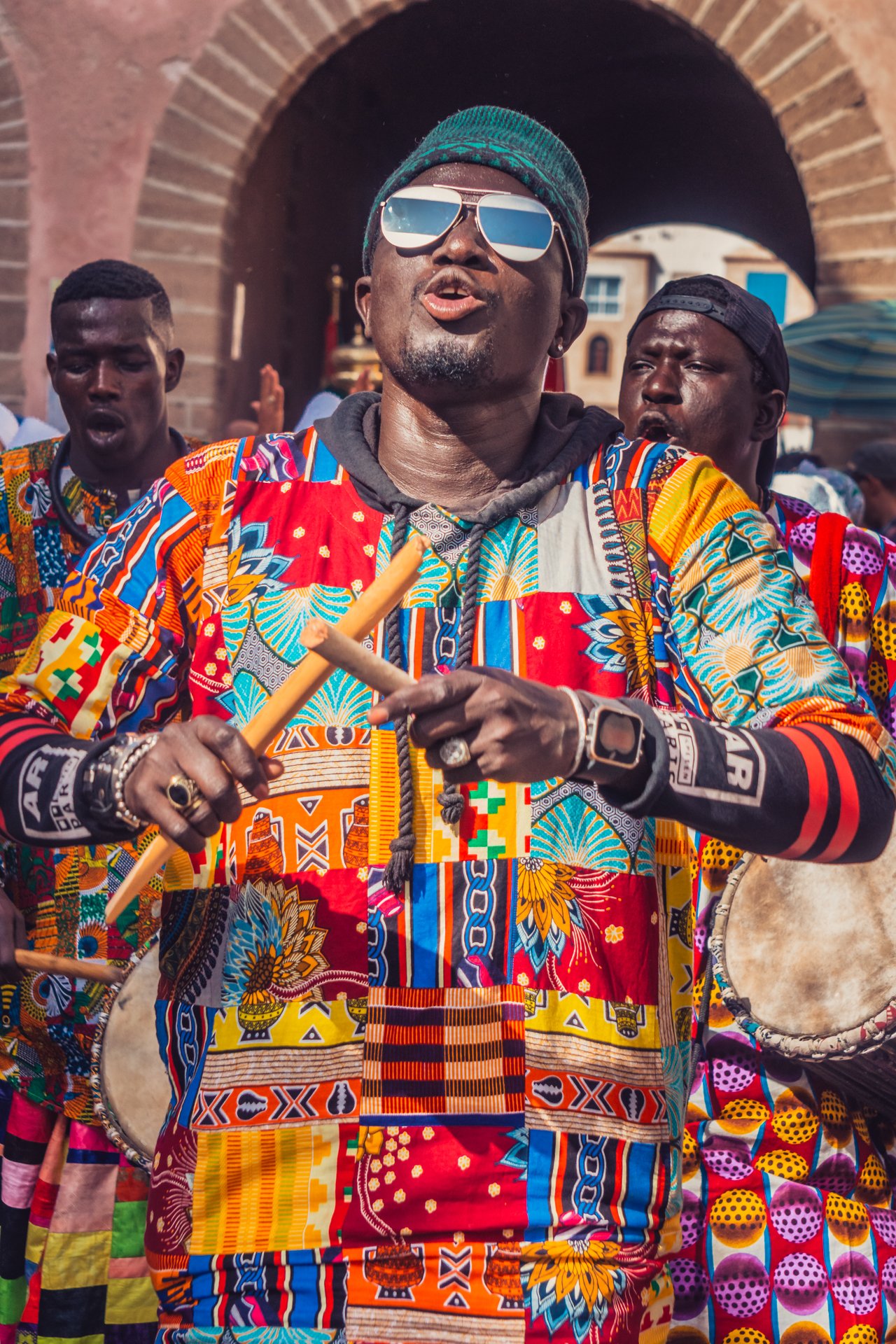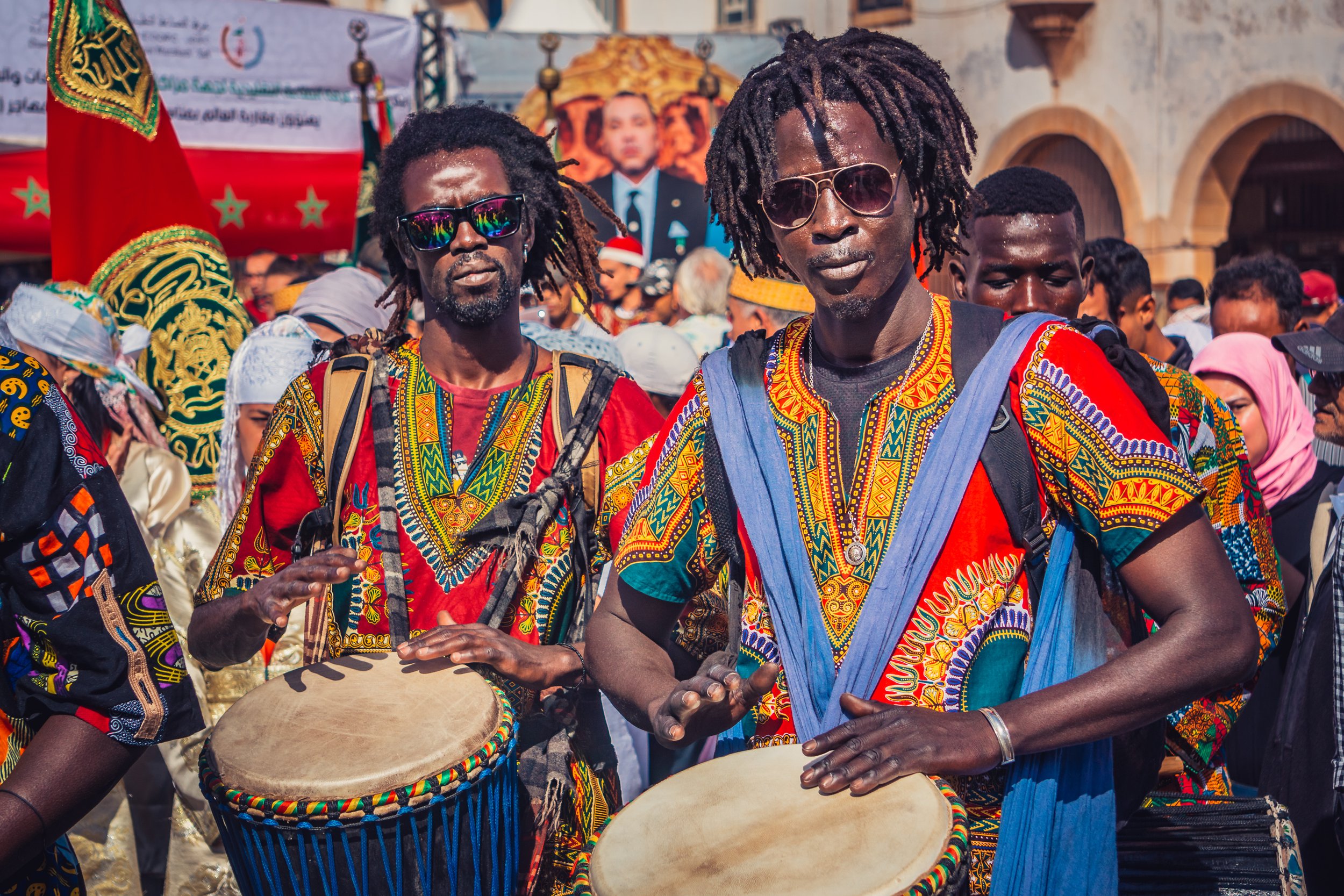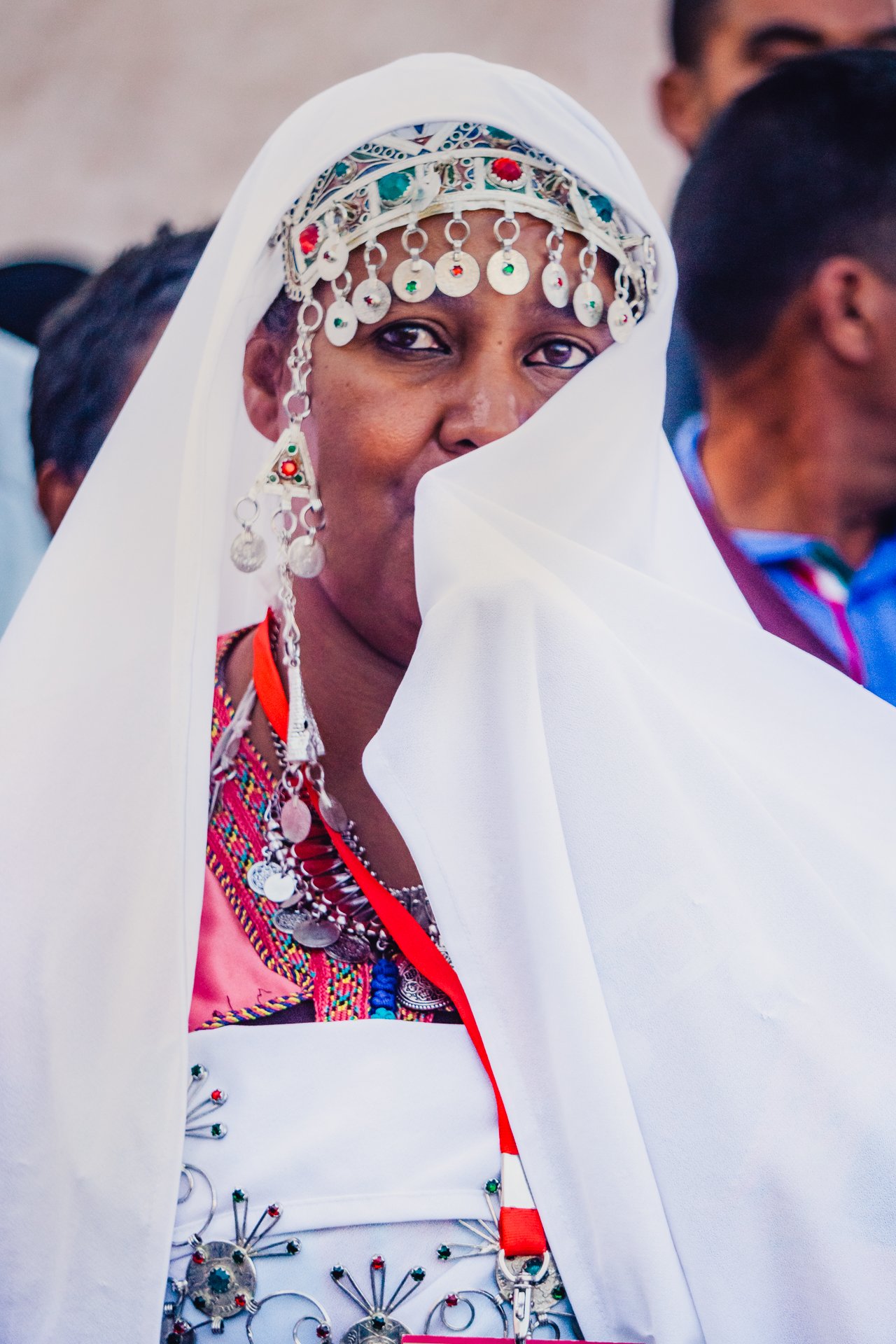Hadra Festival of Feminine and Trance Music Aug. 2018
Originally reported for The View From Fez; August 25th, 2018.
On the afternoon of August 9th, 2018, a colourful and boisterous procession cut through the centre of Essaouira’s medina, marking the beginning of the Hadra Festival of Feminine and Trance Music.
Unsuspecting locals and tourists were treated to a wide display of musical styles – from Senegalese drummers to Egyptian whirling dervishes, and all-women’s Sufi groups from the mountains of Tafraoute to Essaouira’s shores.
The festival, now in its sixth year, ran for three nights across August 9th-11th in Moulay el Hassan square. Every evening saw three performances that represented elements of Sufism’s three popular brotherhoods: Issawa, Gnaoua, and Hamadcha; called popular because they have long been associated with the common people, with inspiration for material being drawn from daily life as opposed to performing refined classical poetry characteristic of Suni Sufism. The fusion of these three styles comes from their ritual known as hadra (meaning “presence” in Arabic – chanting, recitals, and other rhythmic invocations of God) for which the festival is named.
The president of the event, Madame Latifa Boumazzourh, formed the festival in collaboration with Mohamed Abarda, her artistic director, as a means of helping the public – particularly women and younger generations – understand themselves as part of a rich heritage that needs to be cared for.
“All Moroccans have memories and fascination with moussems [popular festivals] of the past. Children grew up with them – though the content changes from place to place – and they’re very special because of their spectacle. Sometimes you keep in mind just the smell of incense, or colour of the costumes, or particular songs,” says Abarda, translating for Latifa. “People are starting to look into their heritage and memories and discover what was popular in the past. Women start to be more liberated and open, and are searching for their real identities.”
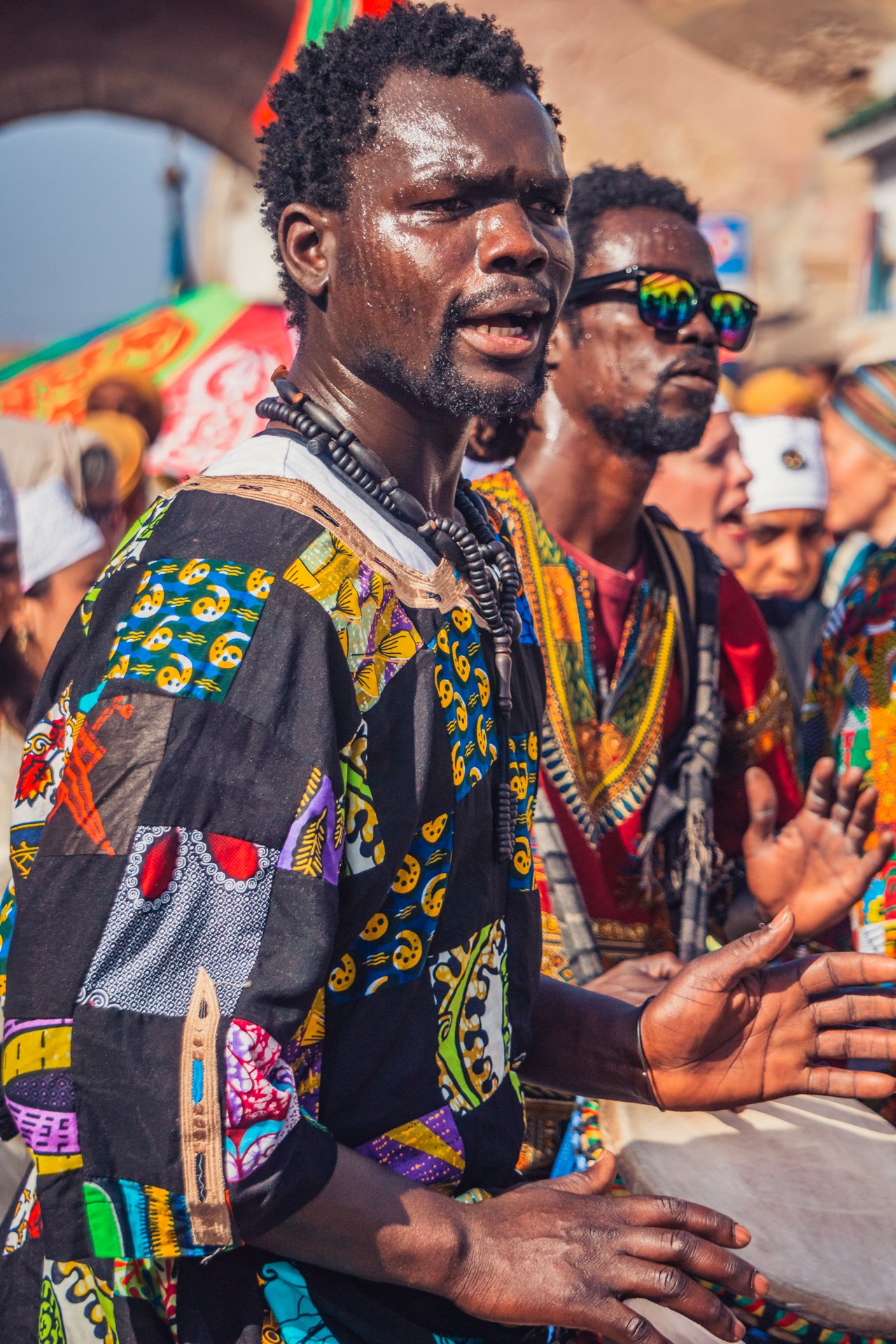
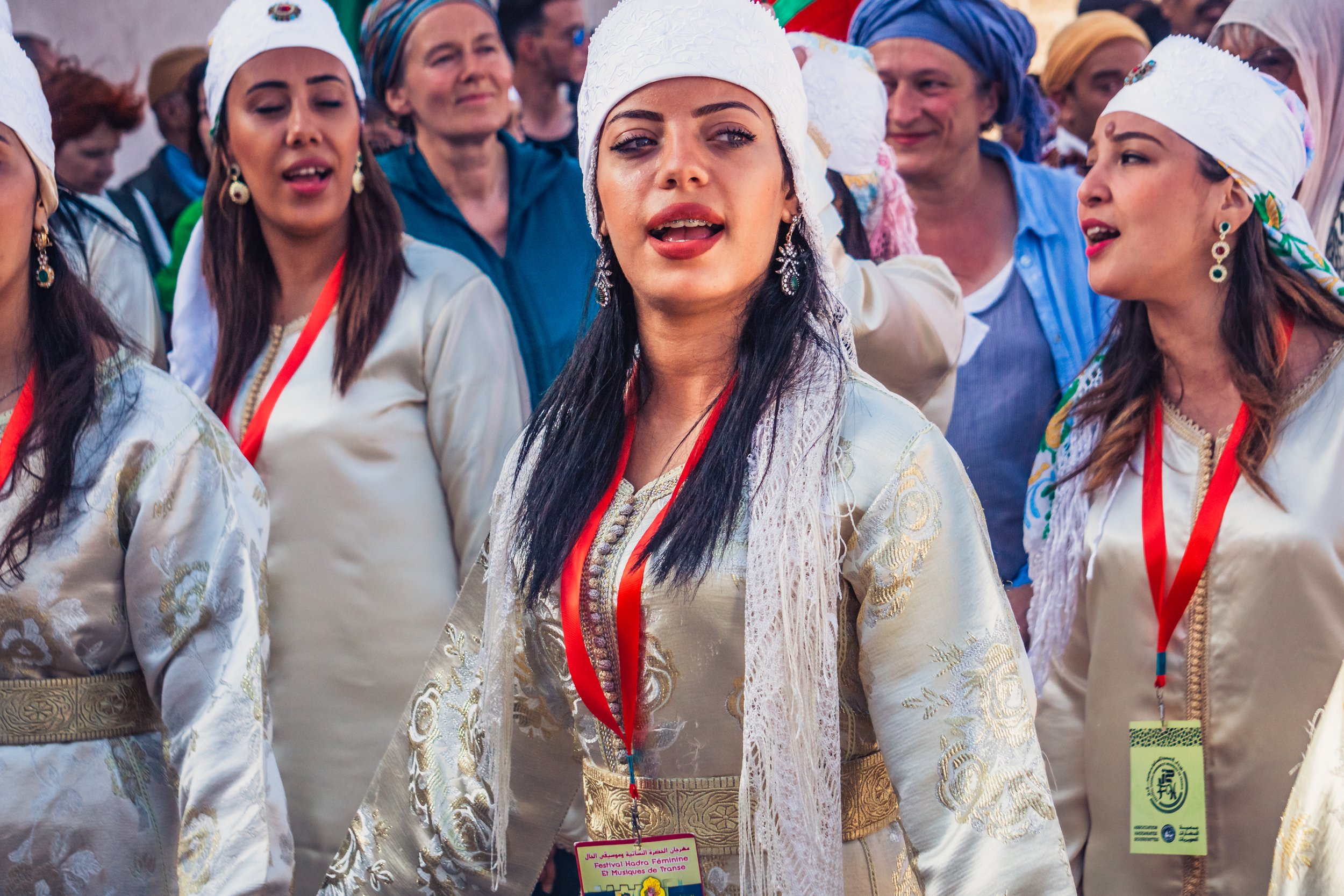

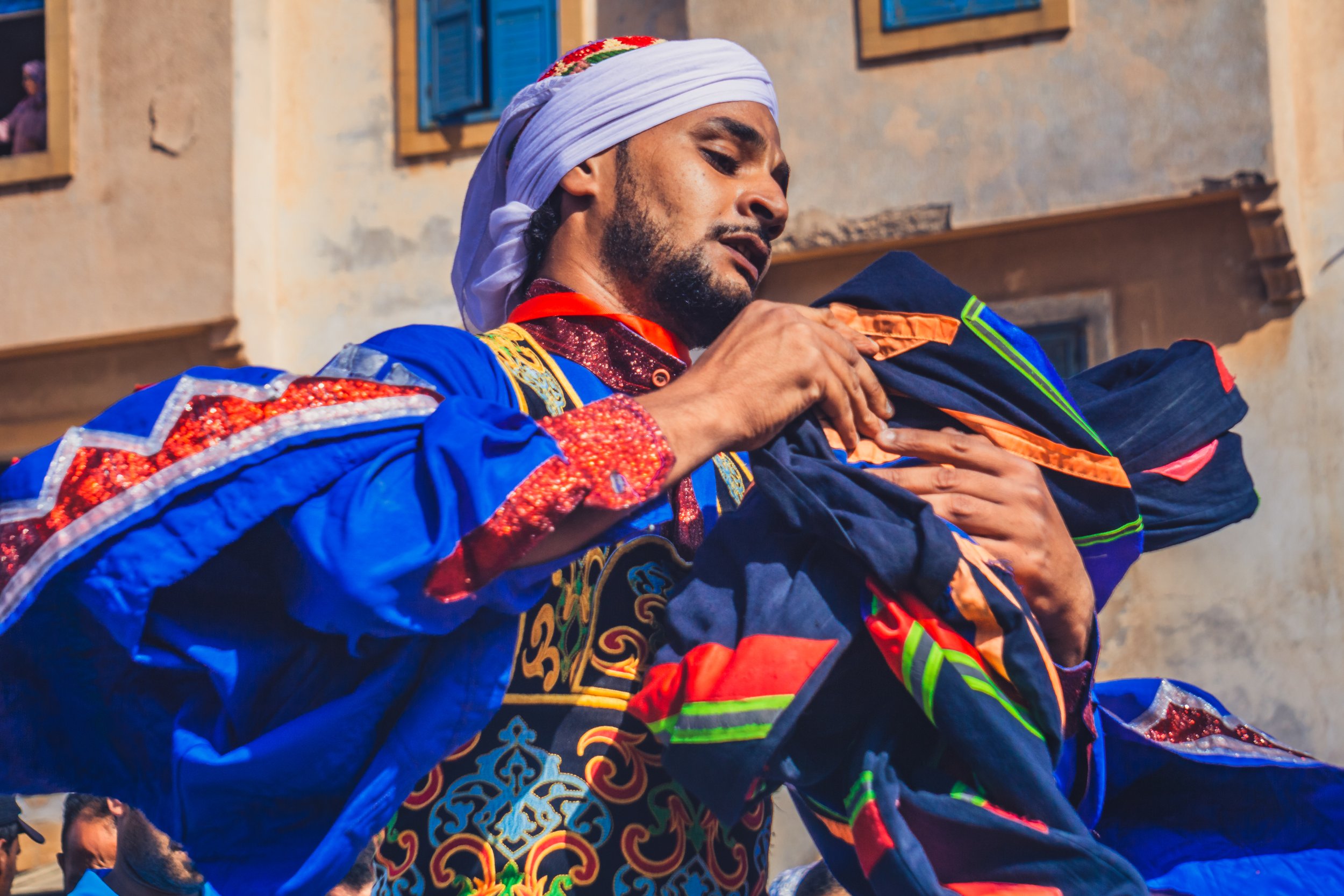
Madame Latifa discovered hadra music when she was five. She would attend moussems with her great-grandmother in Essaouira’s Issawa sanctuary; gatherings of musicians from different brotherhoods who would perform from sunset to sunrise over three days, complete with vibrant costumes, incense, and traditional zikhr (chanting). When her great-grandmother died, Latifa continued to go with her grandmother; thus, she has spent almost sixty years immersed in these rituals. Her brother is the moqadem (keeper) of the Hamadcha sanctuary in Essaouira.
Fascinated with the traditions, but aware they were dying along with the old followers and masters, Madame Latifa formed the Haddarates Souiriyattes Association in 2004 – a collection of elderly women who are “like a library” of old songs and poems – and her own all-female band of the same name, before co-founding the Hadra Festival in 2013.
Her aim is to preserve and spread the hadra through Morocco and abroad, as well as shatter stereotypes about Muslim women; prove they can be respectful to their faith and still express themselves creatively without prejudice. They’ve received positive feedback from astonished audiences in France, Italy, Denmark, and India, who had never witnessed devout women shadowing the trance state onstage, ripping off their veils and whipping their hair around, dancing without restraint.
“People are starting to look into their heritage and memories and discover what was popular in the past. Women start to be more liberated and open, and are searching for their real identities.”
The Haddarates primarily practise zikhr in their performances (as opposed to samaa, meaning audition – music and dancing). Historically, it was not possible for women to perform outside their houses, so they gathered in private to practise their own kind of zikhr, different to the men’s. They would play glasses on a tea tray as a percussion instrument following a procession, as a way to open the space with kindness, joy, and intimacy – to create an atmosphere that’s like family. Only then would they perform the repertoire of the three popular brotherhoods, imploring spirits to pass through the music and into guests to heal them.
Women, while previously banned from performing with men, have always been integral to the process. In Gnaoua tradition, a lila (night ceremony) cannot take place without a female clairvoyant, who opens the space by dancing while the master plays the guembri (a three-stringed lute instrument), as a kind of dialogue for others to enter trance. Guests, seemingly healed by their experiences, would often become followers and members of the brotherhoods. Popular Sufism has spread widely within Morocco, and abroad in regions like Asia and North America.
Having now emerged into the public sphere, the Haddarates’ repertoire has adapted over time and through travel, drawing inspiration from Andalusia to the Orient, rural villages and cities, sometimes invoking the spirits of local saints to heal people or blessings of God. Sometimes they sing about love and joy, and women’s societal struggles. They perform at intimate ceremonies – birthdays, weddings, funerals, and circumcisions – and onstage for larger audiences, dazzling and healing in the same manner as their male counterparts. However, they rarely collect followers.
“Young women are not interested in joining because they think there’s no future in it, or they can’t make money from it,” says Abarda. “It always comes down to money.
“It’s not really easy; even Gnaoua masters who have toured all over the world, to famous places, find they can’t make a living and are still poor. Can you imagine? The Haddarates make a small amount of money, but not much; they’re sometimes paid in gifts at small ceremonies…but it’s not enough.”
Even with the Haddarates’ international acclaim, Latifa and Abarda are struggling to find support within Morocco. Aside from compiling the elders’ knowledge into a book, their goal is to studio record an album, create videos and documentaries about feminine hadra throughout Morocco, and find interested professionals who can apply a scientific understanding to the practice or provide financial support. The band currently receives no government or external funding; the HS Association receives a small sum for the festival.
“We’ve been meeting with a lot of anthropologists here, but no one is interested in this; they say there’s no worth. Better to focus on bigger or known brotherhoods than the Haddarates, because they’re not an order,” says Abarda. “Sometimes we are frustrated; but what can you do?”
Witnessing the large group of women – the Haddarates Souiriyattes joined by Latifa’s daughter Khansa’s own association of young female singers – beat their drums and tea tray and chant with primal resolve, enrapturing their audience to sing and clap and ululate and dance, it’s difficult to understand why no one would take interest in these proud performers. It’s impossible to look up at the stage and not see reflections of your own mother, grandmother, and sisters; and their ambition to challenge stereotypes and express themselves creatively is universally relatable.
“If there is a message, it is one of tolerance and peace and coexistence and good things about women in general. They have the right to show themselves like they do, because there is nothing wrong with it,” says Abarda.
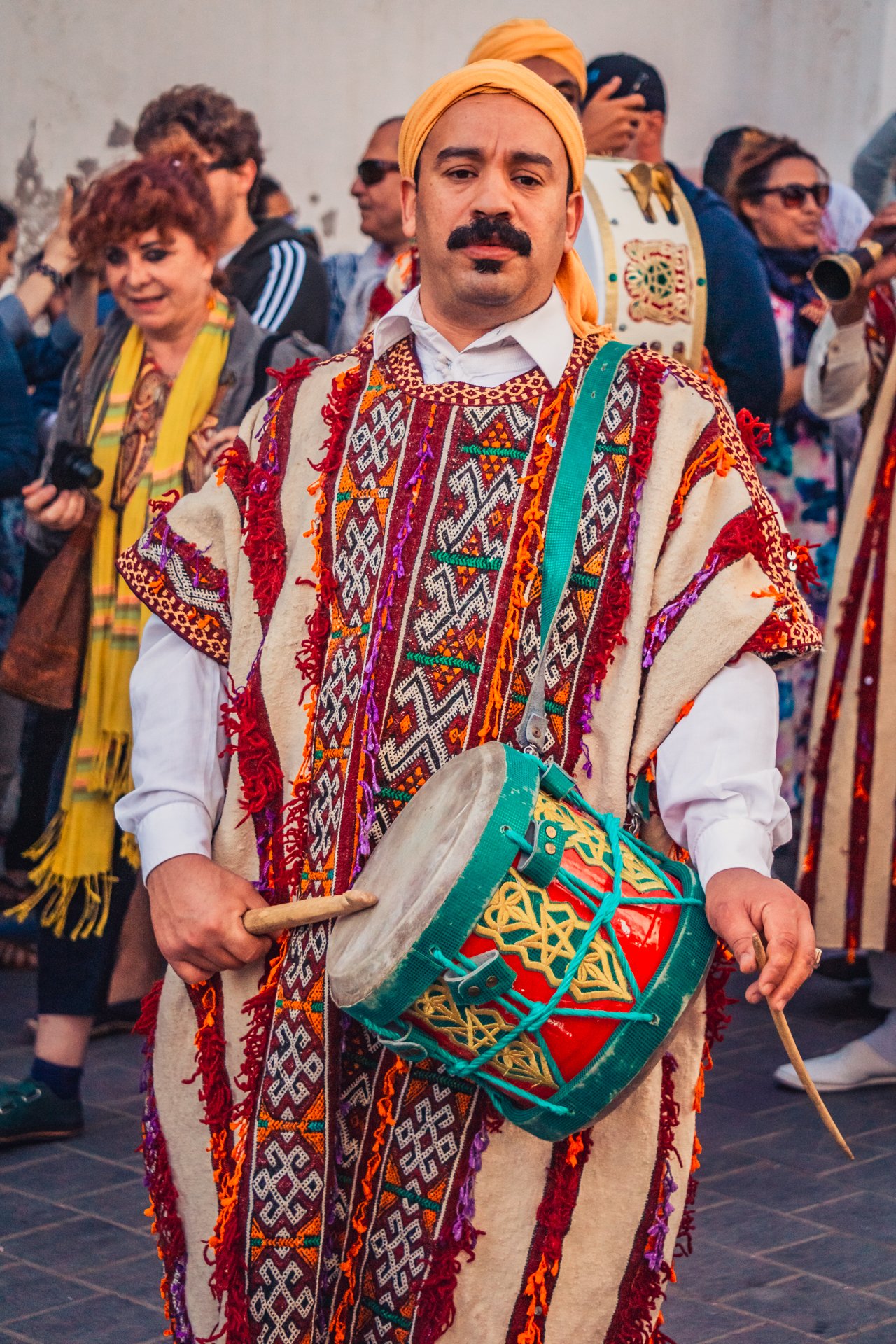
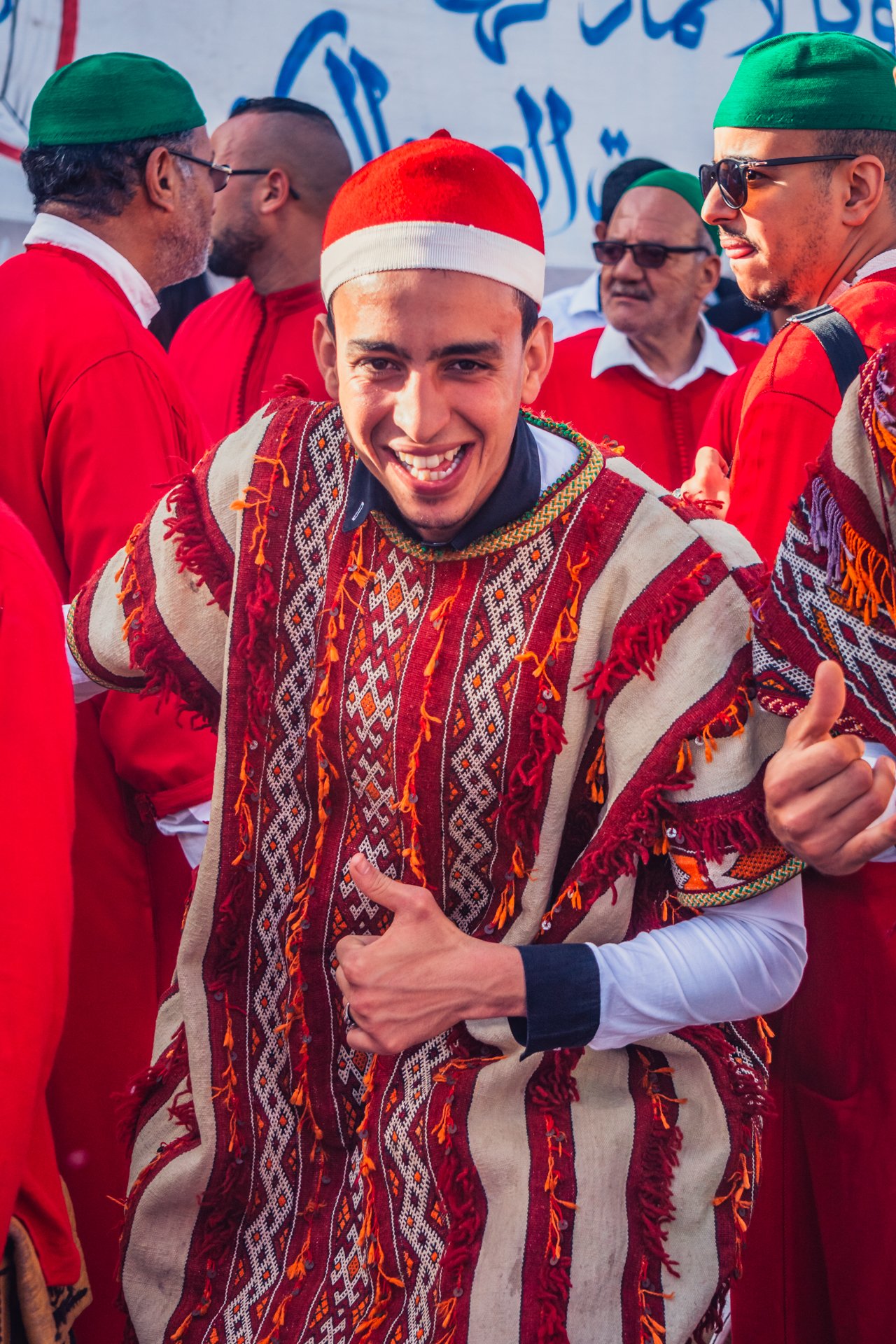
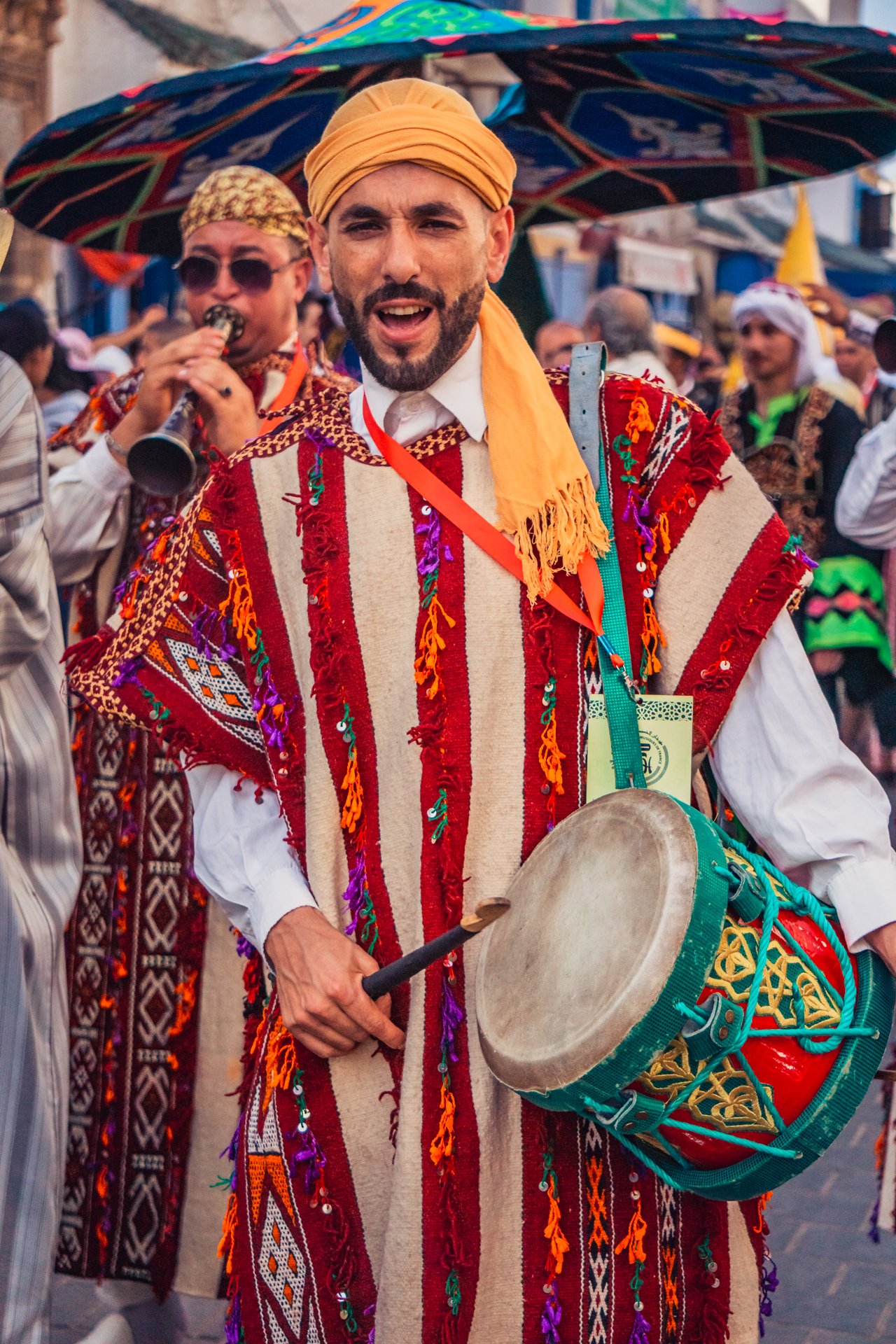
“If there is a message, it is one of tolerance and peace and coexistence and good things about women in general. They have the right to show themselves like they do, because there is nothing wrong with it.”
The Hadra Festival, taking place in August every year, is an ecstatic blend of cultures, ages, and styles, epitomising all that’s musically fascinating about Morocco; a must-see for every local and traveller visiting Essaouira. For more information, follow the Hadra Festival on Facebook (Festival Hadra Feminine et Musiques de Transe) and through their website.
A Little BTS
This is the Hadra Festival of Feminine in Trance Music, based yearly in Essaouira, Morocco; a celebration of collaborative popular Sufi music from all over Africa.
I became a photographer for this festival by accident. I was travelling around Morocco, a little lost, and was put in touch with the event’s Creative Directors by the owner of a restaurant I ate at a few times.
One thing led to another. Before I knew it, I scored a press pass and was conducting interviews with artists, then got thrown inside a hectic street procession to madly snap pics of Senegalese drummers and whirling dervishes and everyone in between.
I thoroughly enjoyed the experience, and am now suitably geared up for more musical performance projects.
